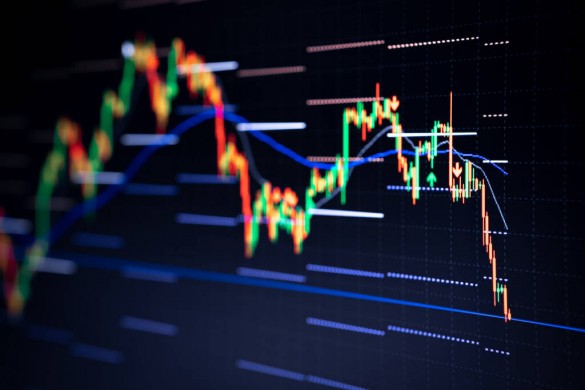Today’s investors are using technology to build truly global portfolios.

The most common rule of investing is simple: stick to what you know, do what feels comfortable. What does this mean for trading portfolios? It means they are mainly geared towards domestic stocks and bonds, offering a comfortable familiarity and safety. Things are changing, however, with a new school of thought that advocates for a globally diversified portfolio.
A new breed of investors is now looking beyond the stocks they traditionally trust, and most importantly, beyond their comfort zone. The question is no longer whether someone should be investing in a globally diversified portfolio, but rather how to do so in the most efficient way possible.
Investing outside your comfort zone
The reasoning behind global investment just makes sense. Channeling investments in a single country, currency, or pair is a “bet” on the performance of just one economy. This can leave portfolios vulnerable and exposed, depending on the performance of just one market. The foreign exchange market alone, for instance, has a daily trading volume of $7.5 trillion, according to the Bank for International Settlements’ latest survey, with updated figures expected by the end of 2025.
Considering we live in a world where geopolitical fluctuations, industry-specific developments, and political unrest can impact a portfolio, diversifying an investment strategy across different regions can help investors minimize risk across separate markets.
This notion is not something new. What’s new is the accessibility investors have in today’s market. In years past, the barriers to entry were formidable, almost intimidating. Investing meant having to deal with different regulatory environments, high transaction fees, and most importantly, trying to find reliable market data. It seemed like an arena for people with an abundance of resources and exclusive access. Today, those barriers are coming down, thanks to the progress and evolution of technology.
How technology is allowing investors to trade internationally
Modern technology has the investor at its core, and its main purpose is to help them trade as effortlessly and efficiently as possible. Platforms are gradually dismantling the obstacles of the past, replacing time-consuming, manual procedures with elegant, user-centric interfaces. What used to require a team of brokers and days of paperwork can now be accomplished in minutes from the palm of your hand using a smartphone. The digital investment sector is experiencing explosive growth, with assets under management projected by Statista to swell to over US$4.1 trillion by 2028.
This technological leap has helped investors in multiple ways:
Direct access to global markets: Leading platforms now offer direct access to the main international exchanges, making U.S. and European-listed stocks and exchange-traded funds (ETFs) available to trade. Fractional share trading is another major improvement, further lowering the entry barrier, allowing investment in high-priced stocks without needing to purchase the full share.
Lower costs: The cost of trading is significantly lower. A number of brokers and digital banks like Revolut offer commission-free trading and have eliminated fees for holding assets. This change makes it more plausible for investors to build and maintain a global portfolio.
Data and analytics: Access to information and data used to be a privilege of the few. Today’s investors have easy access to real-time data, advanced charting packages, and in-depth market analysis. The tools available to investors put them in pole position to invest with knowledge and clarity.
A new era for trading, a new breed of investors
This new generation of investors is knowledgeable. They have everything they need to manage their portfolios and don’t have to deal with the administrative headaches of traditional private banking.
To serve this new breed of investors, a new ecosystem of digital investment services is born. New platforms are built to cater to these needs.
Some are built with a mobile-first approach, combining investment services with everyday banking and payment features. Their strength is accessibility and ease of use for the end-user, making them a popular choice for those new to investing.
Others offer a more advanced and professional experience that includes web and desktop applications. These options are more appealing to investors with more serious ambitions. The investors need analytical tools, customizable layouts, and access to a broader range of instruments such as stocks, bonds, options, and futures. The demand for these advanced instruments is clear, with global trading of futures contracts rising 13.5% year-over-year between April 2024 and April 2025.
To give you more context, consider the distinct approaches of platforms like Revolut and BankPro. Revolut, with its mobile-first design and access to over 4,000 stocks and 230 crypto tokens, is geared towards mass-market retail clients and those beginning their investment journey.
In contrast, BankPro targets a more sophisticated clientele of private investors, who value cross-border features. It provides an advanced desktop and mobile platform with rich analytics, real-time data feeds, and access to a curated selection of 2,100-2,500 global stocks and ETFs.
BankPro’s specialization is evident in its offering of over 200 derivatives, including complex instruments for foreign exchange and commodities, a feature set that sets it apart from other platforms.
The future is global and accessible
The shift to global investing is not a trend. This is a fundamental change in how people can access investment for the foreseeable future. As new technology continues to break down barriers, the ability to build a diversified portfolio will become more mainstream.
The future of investing will be decided by the market players who recognize that today’s investors value clarity and access.


 Hot Features
Hot Features












